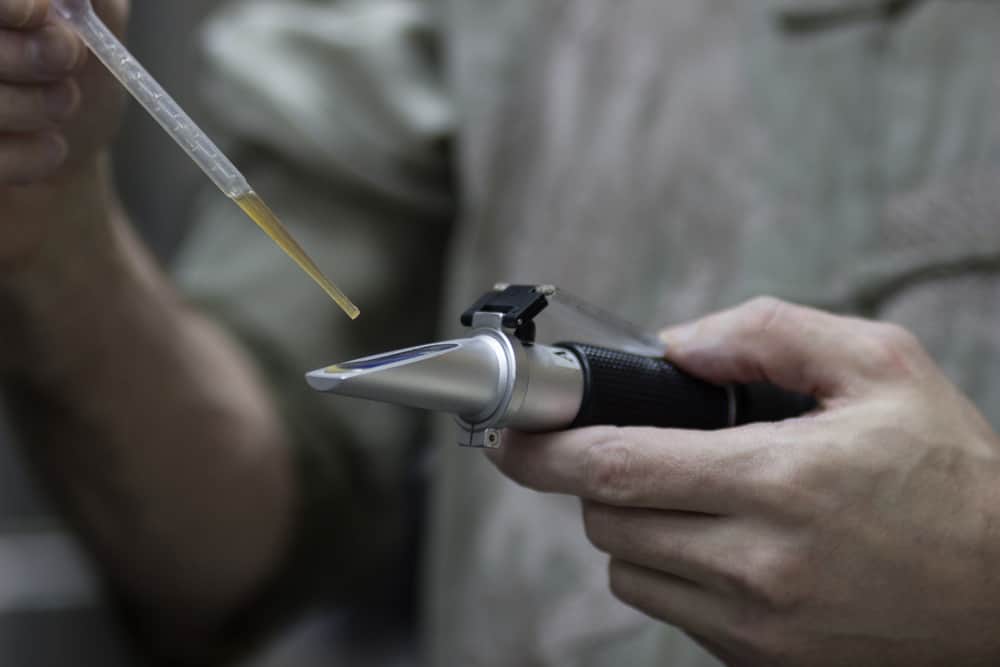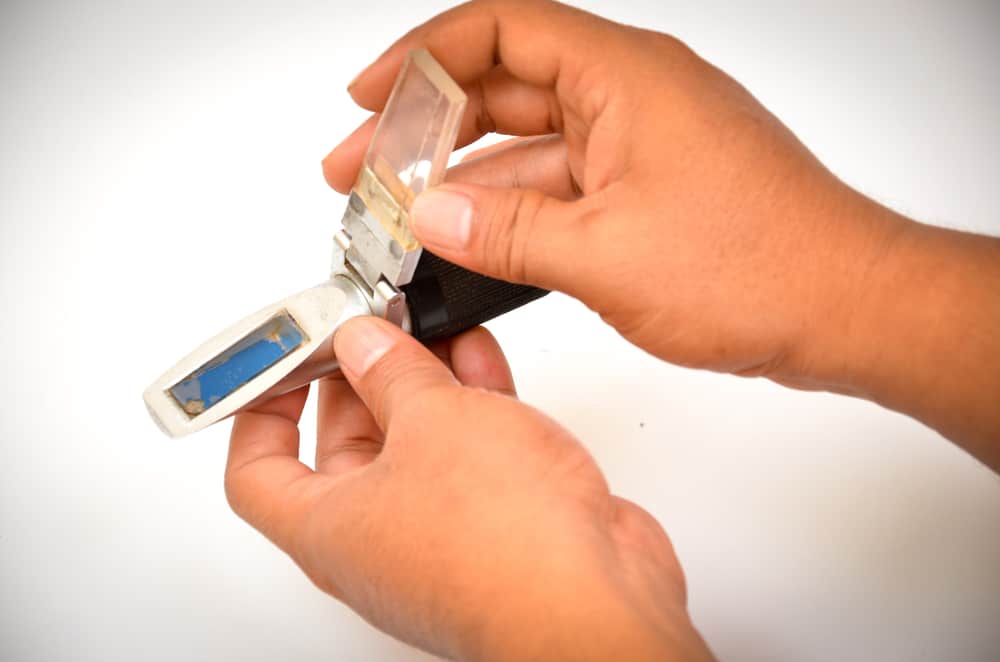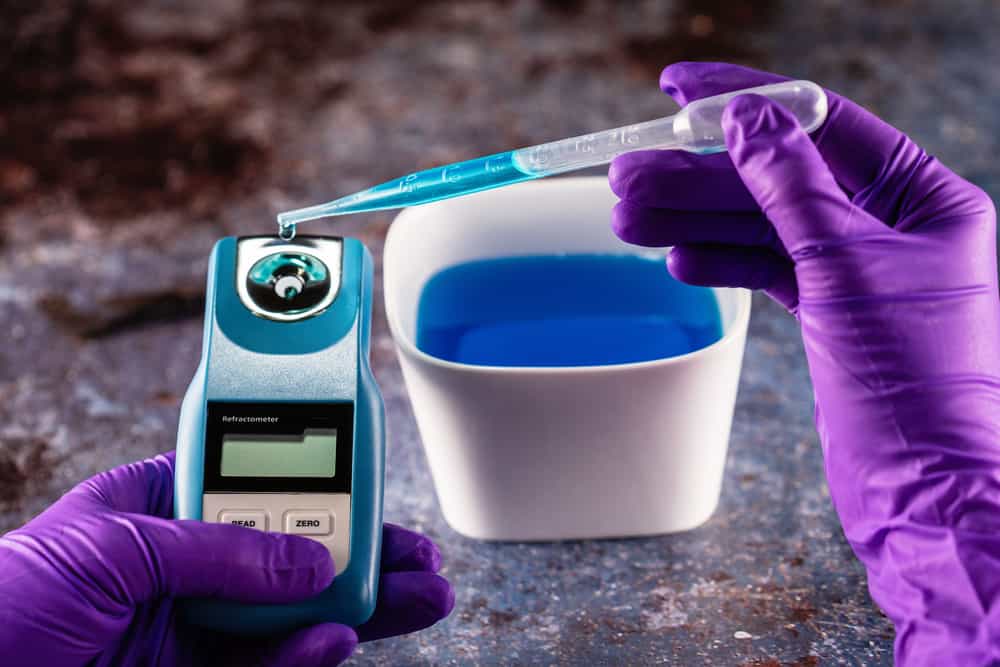
A tool invented in 1869, Abbe refractometers are a highly useful scientific instrument. First developed to measure the refractive nature of liquids, its inventor, Ernst Abbe, wanted to see just how much light bent within various liquids. Using his newly-invented instrument, he started categorizing various liquids into a refractive index.
In the 150 years since the device was invented and displayed to the world, the refractometer has undergone very few changes compared to its original design. What has changed, however, is our understanding of just how the refractometer can be utilized effectively. Our understanding of the properties of various liquids has also changed exponentially.
This article aims to break down the Abbe refractometer, how it varies from other refractometers, and how it has seen practical use over the years. We will also look at various current models and how they differ.
Contents
What Is a Refractometer?
So, now that we know that the Abbe refractometer can measure the amount that light bends within a liquid, what does this mean? Why is it useful to know this kind of measurement, and how exactly can this sort of information be translated into something resembling a practical application? You might be surprised how this measurement could hold some quality real-world effects.
The primary use of refractometers today is to measure the amount of dissolved solids within a liquid. By measuring the concentration of a dissolved substance, certain kinds of refractometers can accurately gauge how a liquid solution will taste. While you might not be able to distinguish exactly what solids are present within a liquid solution, if you already know the ingredients within a liquid solution, refractometers are enormously useful for use in the food and medical industries.

How Does an Abbe Refractometer Work?
An Abbe refractometer works by placing liquid on a glass slide and then fitting that slide in between two prisms. The lower prism, or illuminating prism, is ground roughly so that when light is shone upon it, the reflected beams can bounce as many times as possible through the sample of liquid being measured. The top prism, or refracting prism, is smooth and clear to allow the resulting visual to seamlessly pass through and be viewed through the refractometer’s viewfinder. By viewing the resulting picture, the user can have a much more detailed understanding of how the liquid sample can be measured and understood. This is aided by the fact that the eyepiece has crosshairs to make measuring the sample’s resultant light-dark interface easier.
What About Modern Abbe Refractometers?
These days, Abbe refractometers have many technological advancements to make them easier to use. Not only are they made of lightweight materials to make them easier to transport from lab to lab, but they also have been equipped with plenty of other features, including a digital display for showing the user measurements. Using a digital display was a monumental improvement, as it meant users no longer had to rely on the functionality of their eyes to read the machine effectively.
Another significant advancement was the addition of the solid-state Peltier effect devices, advanced pieces of tech that can heat and cool liquid samples. To heat and cool liquid samples on older models, users would have to run a water bath that had to continue running. This meant a lot more work to have an experiment that could be properly measured and replicated by other interested parties, and it also meant slightly more inaccurate results. With these modern improvements, tests could be conducted on liquid samples with the Abbe refractometer in a much shorter period.
Unfortunately, Abbe refractometers are still highly immobile due to their size and the number of additional pieces of technology to make them work effectively. They are considered bench-top instruments mainly used in laboratories around the world. Even with their modern tuning and the immense number of improvements, they aren’t as easy to use as the other kinds of refractometers on the market.
Practical Uses of the Abbe Refractometer
You can use the Abbe refractometer today to perform many scientific tasks without much maintenance. If you put in the time and effort required to learn how to operate and utilize an Abbe refractometer and have access to one, then it’s recommended that you learn how to use one. These machines can deliver results that range from “one to two units in the fourth decimal place.” This means that by utilizing an Abbe refractometer, you can accurately determine the alcohol percentage of alcoholic drinks, the sugar content in soft drinks or fruit juices, and many other percentages you might be interested in.
You can use the Abbe refractometer to determine how healthy certain liquids are. If you’re examining your diet and the kinds of beverages you eat, then the Abbe refractometer can be useful if you have access to one. You can find out just how much sugar, sodium, or carbohydrates are in certain solutions. Once you learn what to look for and how to use the refractometer, you’ll have a skill that will almost always universally translate to similar devices.

The Abbe Refractometer Is the Oldest Kind of Refractometer
Today, refractometers are insanely useful instruments in many industries. Professionals in the food and beverage industry, the pharmaceutical industry, and many other professional fields utilize them. The Abbe refractometer was developed in 1969, and we wonder if Ernst Abbe ever imagined that his instrument would be so widely used worldwide. However, what would be even more surprising to him is that his fundamental design would go so long with so few changes. At the heart of every Abbe refractometer is the same simple design: two prisms, a telescope viewer, and a liquid sample placed between them. This iconic design would prove immeasurably useful for designing all kinds of adjustments and improvements in the century and change since then.

